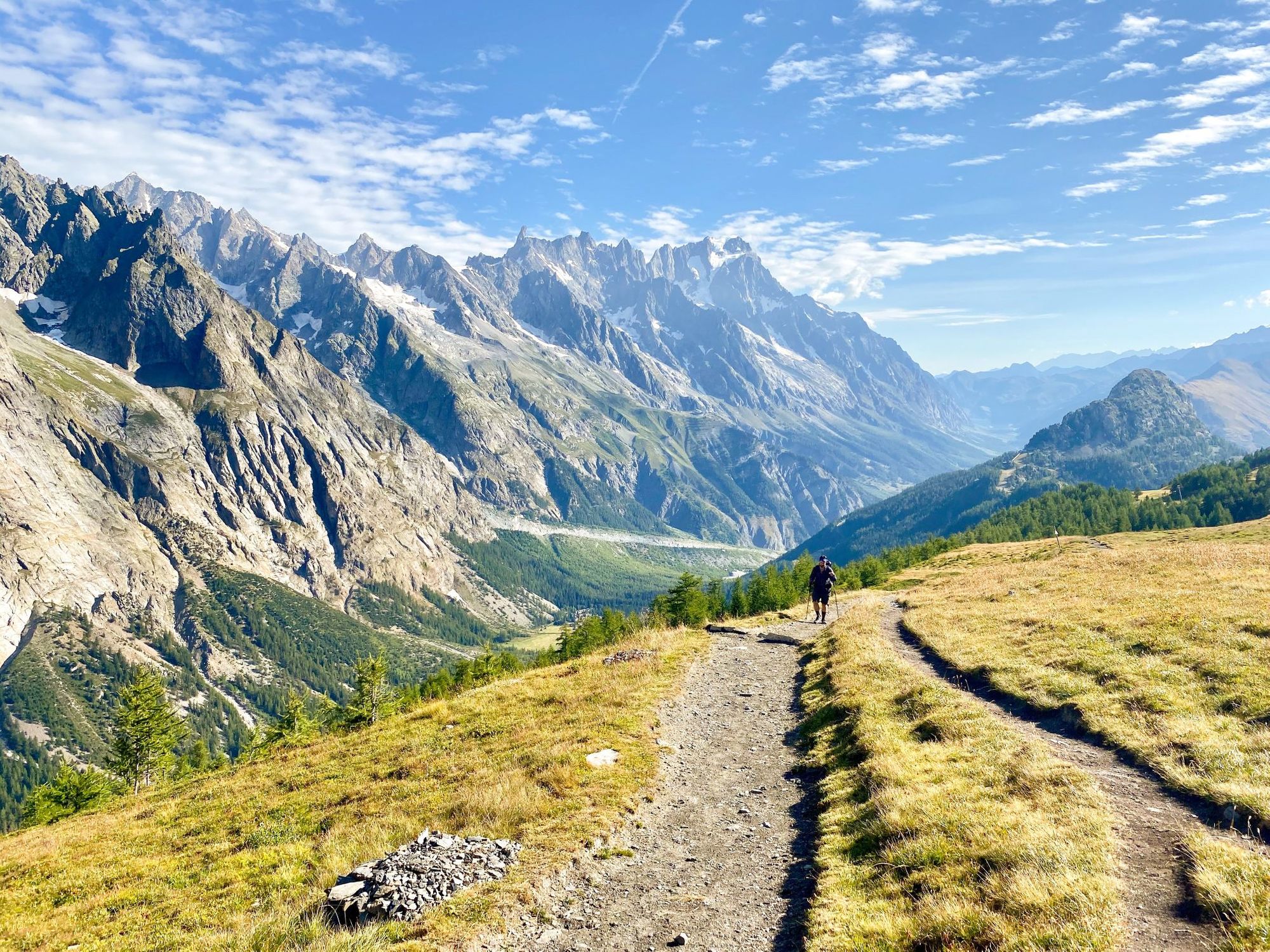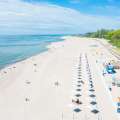The Tour Du Mont Blanc is a famous celebrity as far as long walks in Europe go. It is a 180-kilometre walking trail in the French, Italian, and Swiss Alps that snakes its way around Mont Blanc. Typically, it will take 11 days for a trekker to complete the entire circuit, beginning and ending at Les Houches, near Chamonix.
Going by the standard route, the highest point reached is 2,584 meters. The trail is most certainly picturesque, with the absence of forest cover allowing trekkers to enjoy sweeping views of the glorious mountains at every turn. However, there is so much more that makes the Tour Du Mont Blanc extra special.
It’s a real challenge
Trekking the Tour Du Mont Blanc is definitely not a walk in the park. It comprises brutal ascents and equally challenging descents along the whole route. Trekkers will find themselves climbing to 2,500 metres on five occasions, with a total elevation gain of 30,000 feet. It is a lot of work for sure, but not something you’ll ever regret.
It’s accessible
Whatever the Tour Du Mont Blanc costs in terms of time and difficulty, it makes up for in accessibility. The trails are well marked, so you can embark on a solo hike if you prefer. There are tour operators that offer flexible tour options, including self-guided tours, so you won’t have any problems – even if you prefer the independence of a self-guided tour. One of the best of these we’ve come across are the breath-taking guided Tour Du Mont Blanc packages that are overseen by the seasoned trekking company Salamander Adventures.
Because the path follows a very popular trail in Europe, people are never too far away and you will be able to get help whenever you should need it. You can even create your own itinerary, because the trail offers the flexibility of being able to jump on or off at different points. Visit the tourdumontblanc.holiday website for more info on booking your trek today.
The wildlife
The soaring peaks of Mont Blanc are not the only spectacular sights to see. The area is rich with wildlife, so it will not be uncommon for you to spot snakes, lizards, marmots, jumping fish or even mating ibex.
The culture
There is no better way to immerse yourself in the culture of any area than touring on foot. Walking through historic hamlets in Switzerland, Italy and France, you’ll be able to experience local life
up-close. There is also the local food to enjoy – and you’ll almost always find bakeries and stores dotted around villages. Of course, there are also refuges where you can stop for a plate of hot food.
The people
If you are hiking in a group, you will likely be with people from all over the world. From young to old, French to Japanese speaking, the diversity can make the experience that bit more interesting.
Different times of the year at Mont Blanc
Between mid-June and mid-September is generally the best time to visit Mont Blanc. During this period, most of the mountain huts will be open, but it is important that you reserve a bed in advance, as this is high season. Christmas is also a popular time, so you might want to visit in January and February when the crowds are gone, to enjoy a bit of snowshoeing.
If you intend to visit in May, it pays to be careful, as the snow is melting and the rocks and boulders will be dislocated. Hikers who visit within this period often walk with a helmet. If downhill skiing is your thing, the best time to visit is between March and April. Meanwhile, October and November are about the worst months in which to visit the area, as the weather is more unpredictable and the days are shorter.
Look out for the Mont Blanc Ultra Trail race that is held in the last week of August each year. Unless you are watching or participating in the race, you will need to check to make sure your itinerary will not be affected by the crowds.
Also, because 1st July and 1st August are the main holiday start dates in France, you can expect air, road and rail travel to be busy. The same applies to 14th July and 15th August, which are both public holidays.
So, what are you waiting for? Add the Tour Du Mont Blanc to your bucket list now!



